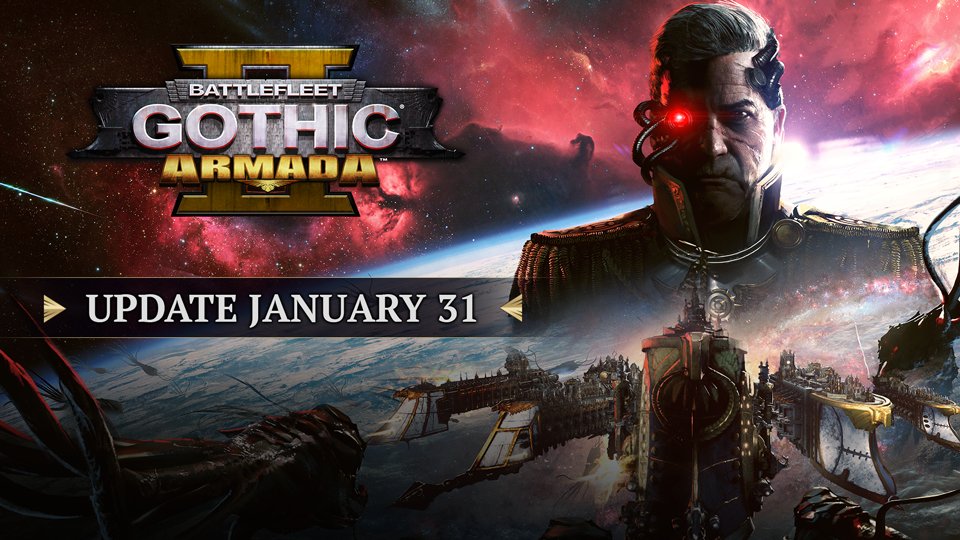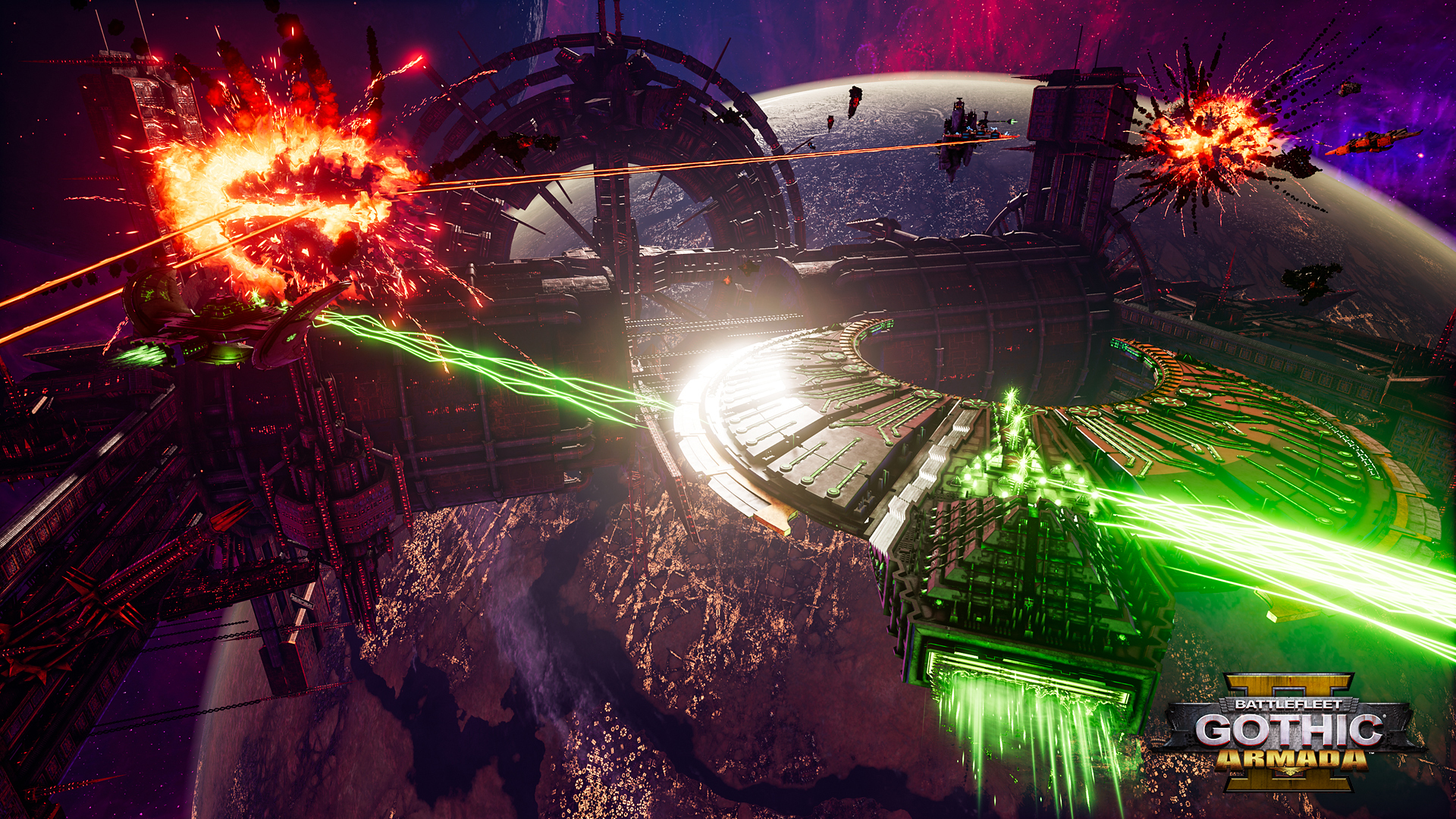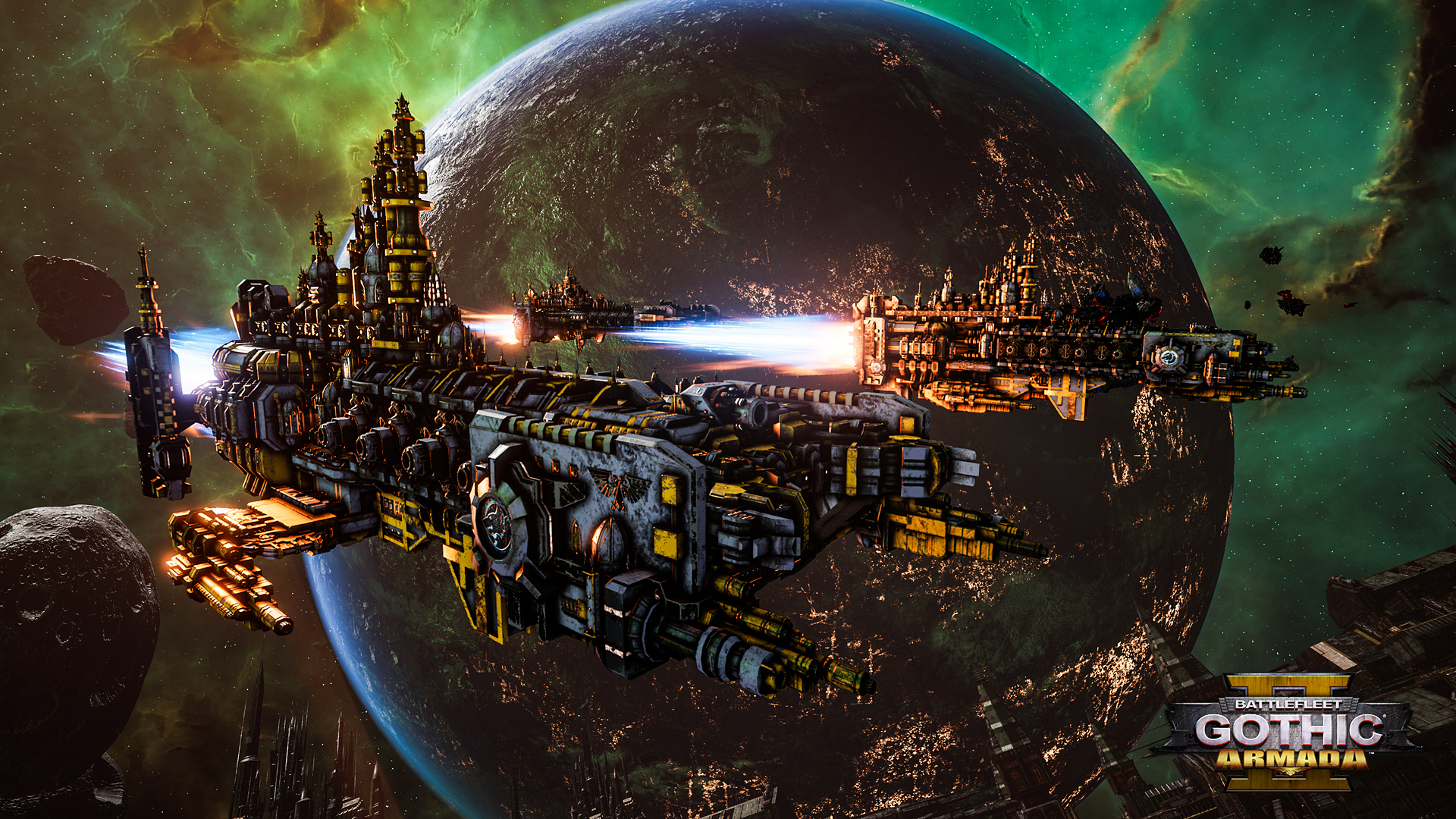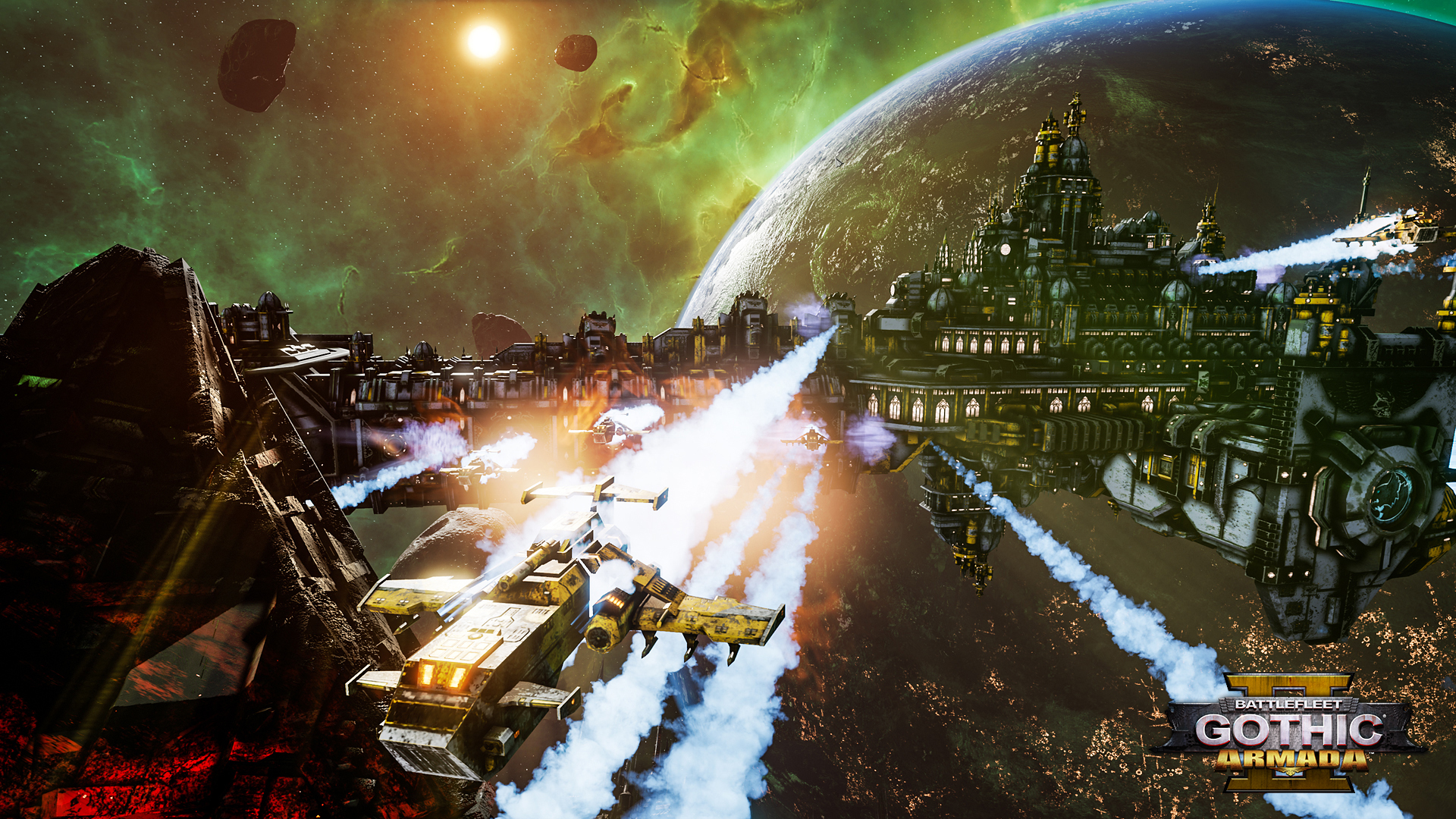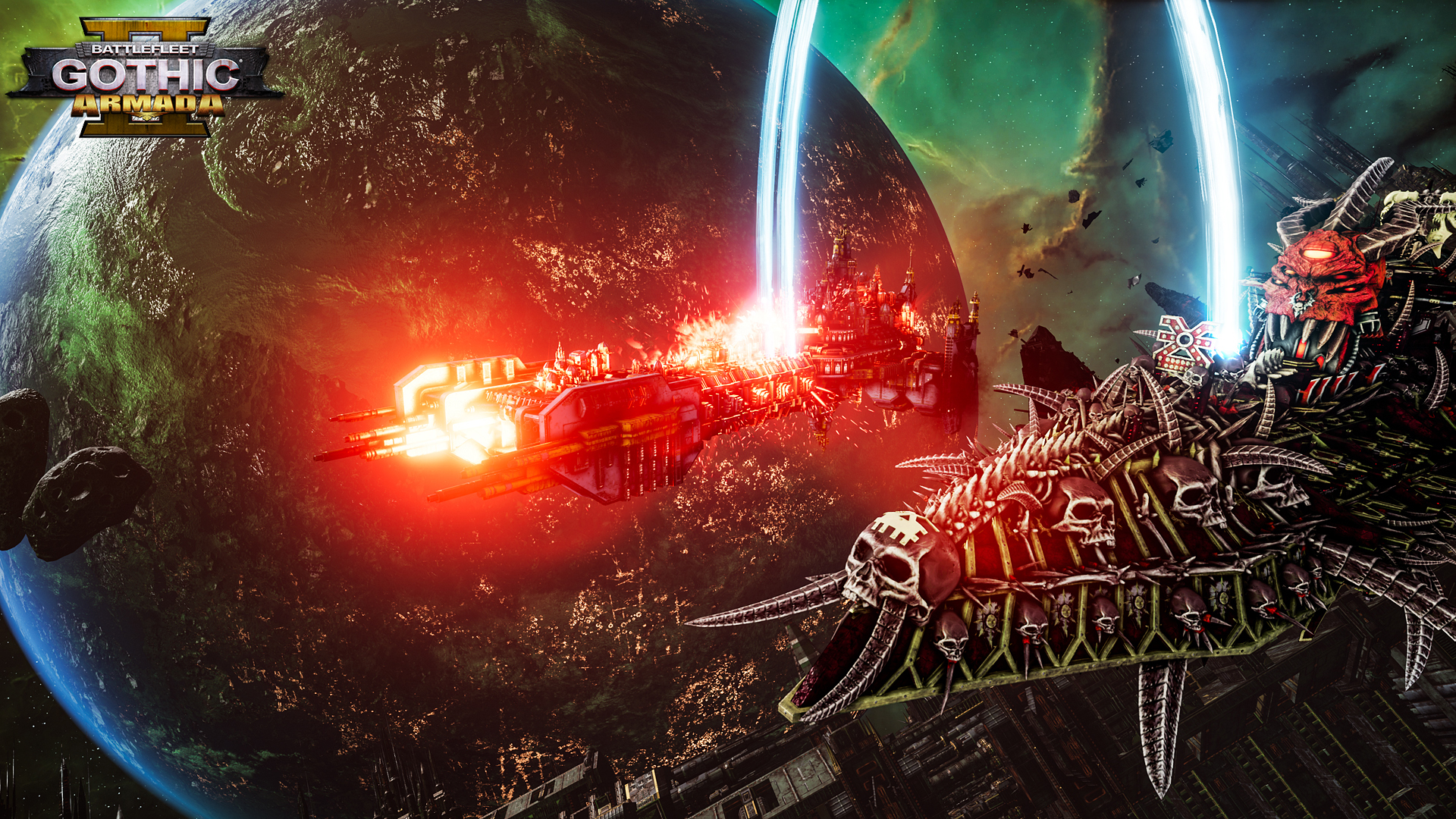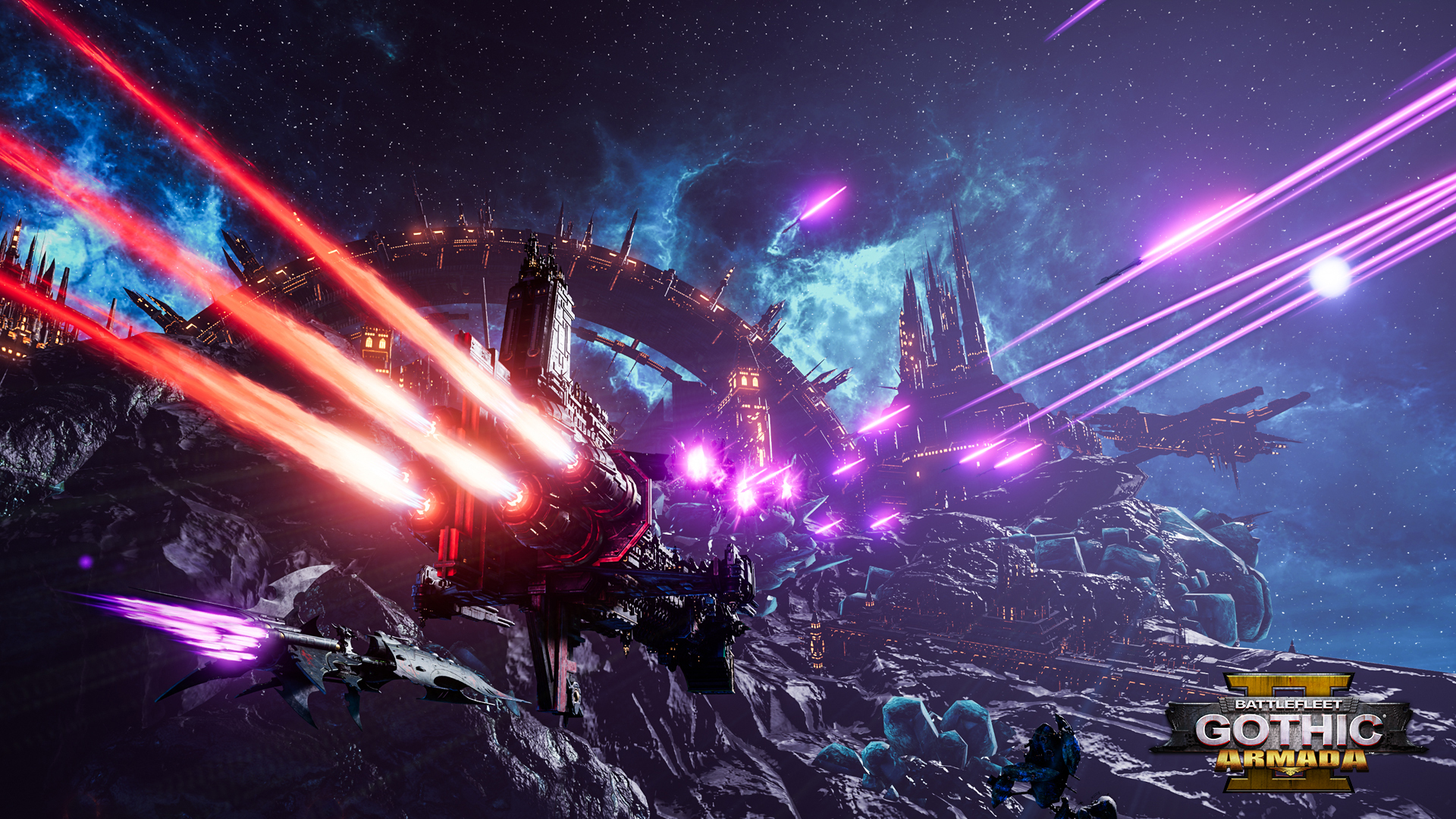
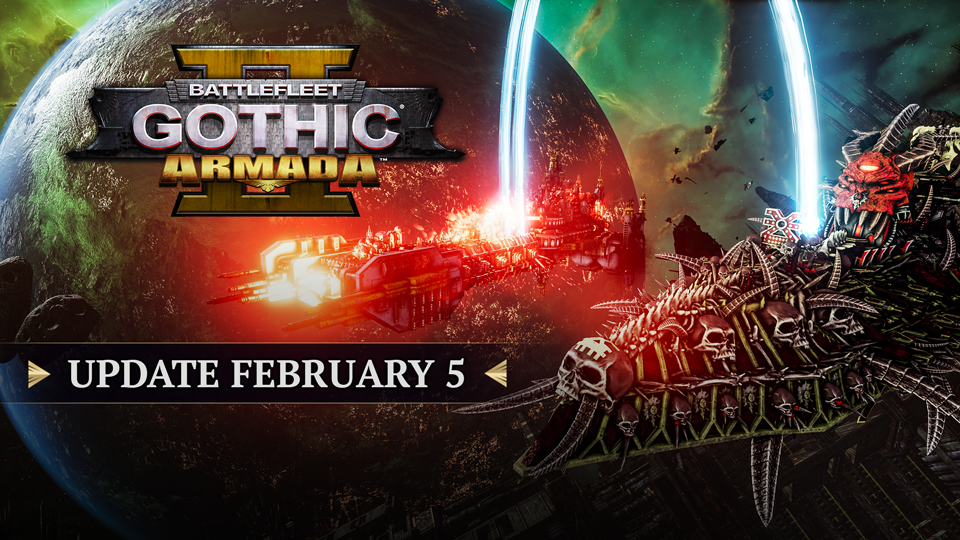
Greetings Admirals!
We're happy to announce that our first patch is now live! A huge thanks to everyone who provided us with invaluable feedback on both the public and beta branch! Without all of you, many of these fixes wouldn't be here.
The beta branch has now been closed, but expect to see it back for our next update. Read all about the thoughts behind this patch's changes and what we have in store for the future in our original announcement.
For the full patch notes, see below. We've just discovered an issue with naming saves using special characters (for example : ; ! ? . , > < etc.), so please stick to letters and numbers for now. Please be aware that co-op is still in an early access state, so if you run into any issues, or just want to give us your thoughts on the game, don't hesitate to let us know on our Steam community hub and official forum. You can also join our Discord to meet fellow players and get the latest news from the devs: https://discord.gg/fqpAG2D
Now, go blow up some ships!
Tindalos Interactive & Focus Home Interactive
New feature:
- Battlegroup: 2v2 A new mode (currently in beta) that increases max fleet points from 600 to 1000 per player in 2v2 mode.
- (Campaign) Increased maximum requisition points from 1350 to 1650 for the highest admiral levels
- (Campaign) Autobattle results are now more predictable, removing random positive/negative percentages
- Lowered fleet power of enemy Space Marines in the Necron mission The Prize
- Lowered fleet points of the enemy in the Imperium mission Silver Dawn
- Impaler skill damage increased from 2 to 6
- Critical chance of Lances/Zap/Pulsar/Shadowlance/Bio plasma/Gauss has been doubled
- Ramming damage has been increased by 50%
- Ships are now less likely to suffer system critical hit depending on their tonnage.
- LC: remain unchanged (no critical reduction)
- CR: critical reduction chance modifier reduced from 0.9 to 0.8
- BC: critical reduction chance modifier reduced from 0.8 to 0.6
- GC: critical reduction chance modifier reduced from 0.7 to 0.4
- BS: critical reduction chance modifier reduced from 0.6 to 0.2
- LC: remain unchanged (no critical reduction)
- Spirit stone targeting node upgrade now applies only to the admiral ship
- Drukhari ships' lock-on stance replaced by tracking sense stance
- Inertialess drive cooldown reduced from 90 to 75
- Tyranids ships’ cost slightly reduced
- Tracking sense critical hit chance modifier now properly applies a 100% modifier to critical chance instead of 20%
- Disruption bomb channel time increased from 10 to 15 seconds
- Disruption bomb cooldown increased from 60 to 90 seconds
- Improved augur array/Many-Eyed Prophet/Nicassar Prescient/Multi-Spectrum Sensor upgrades detection range increased from 4500 to 9000
- Mechadominator effect duration increased from 10 to 30 seconds
- Daemonic infestation now applies to all line ships
- Slaanesh promise duration reduced from 10 to 5 seconds
- Dark matter cannon speed reduction reduced from 50% to 25%
- Lictor brood upgrade now applies to line ships instead of light cruiser only
- Resurrection orb now gives back 3 troops instead of 1
- Stabilized flow system when going in/out of battle
- Fixed game loading that didn’t automatically load the auto-save
- Fixed end of battle screen
- Fixed the result screen that was displaying a defeat on the guest-side and a victory on the host-side
- Beta experience rating added in multiplayer score screen for sharing the player’s feedback with the dev team about the beta mode
- Scrollbar on the saves list screen
- Confirmation pop-up in the shipyard when revoking a ship
- Space Medusae now have a feedback range when exploding
1. Campaign:
- Imperium Campaign & Prologue fixes:
- Fixed validation of the mission Preparation for the End of Time
- Fixed crash at the end of the mission The Chosen of Abaddon
- Fixed a Chaos ship that has to be boarded in the prologue. It now has defence turrets to match the dialogue/narration
- Fixed feedback of the player’s narrative choice in the mission Repentance
- Fixed the Nurgle’s FX that links monuments in the mission The Chosen of Abaddon
- Fixed inverted admiral icons on the pre-match screen in Stopping the Harvest
- Fixed dialogue that wasn’t triggering at the arrival of the Phalanx
- Fixed localisation text on the Aurent Pattern Munitions upgrade
- Fixed reinforcement fleets as reward of the mission The Invasion (Tyranid Annihilation)
- Fixed achievement “Stick with your Own Kind” (granted after the first Eldar Annihilation Ark mission).
- Fixed validation of the mission Preparation for the End of Time
- Tyranid campaign fixes:
- Fixed deployment areas in the mission Slip Through The Net
- Fixed failed secondary objective display in the mission Slip Through The Net
- Fixed secondary objective not giving the proper rewards in the mission Slip Through The Net
- Fixed secondary objective not giving the proper rewards in the mission Surprise Appetisers
- Updated reinforcement system in the mission Gourmet Meal
- Updated dialogues in the mission Indigestible
- Updated fleet points in the mission Flesh Is Weak
- Fixed Infiltration skill so that it can’t be launched on a blocked system
- Fixed the reward in the mission Buffet
- Fixed a dialogue trigger that was activated in the end of the mission Buffet
- Fixed the achievement trigger when destroying the Dark Throne
- Fixed objective completion when boarding the Space Station in the mission Wounded Prey
- Fixed the possibility to replace the Ancient One in the mission The Devourer Wakes
- Fixed Death World POI attribute tooltip
- Fixed Spore mine system defence item
- Fixed deployment areas in the mission Slip Through The Net
- Necron campaign fixes:
- Fixed a crash in the Necron Campaign if you would capture Agripinaa from a save starting during PreOrderBeta 2 (if your save is from PreOrderBeta 2 and you have already captured Agripinaa you need to reload before that point)
- Fixed validation of the mission The Prize
- Fixed issue in the mission Star Makers where the player could be blocked after having destroyed the Blackstone
- Fixed infinite life for escort ships from a Necron upgrade
- Fixed the outro of the mission End of a Billion Souls (the Craftworld now disappears)
- Fixed the Shards of Yggra'Nya upgrade effect in the mission Veil of Shadows
- Fixed camera that was going through Space Hulks 3D meshes in the mission The Beast’s Last Stand
- Fixed a crash in the Necron Campaign if you would capture Agripinaa from a save starting during PreOrderBeta 2 (if your save is from PreOrderBeta 2 and you have already captured Agripinaa you need to reload before that point)
- User Interface fixes:
- Fixed Plasma Storm tooltip in Necron and Tyranid missions
- Fixed a stuck weapon highlight when mousing over it
- Fixed hidden sectors’ names in which the player had no fleet
- Corrected text on the fleet details title of the score screen
- Updated a currency icon for tyranids (shipyard upkeep)
- Updated the visibility of the laurel in the stats screen
- Fixed the text display on fleet names that exceeded the pop-up size
- Updated urgency gauge display when in disabled mode
- Fixed game over sound FX
- Fixed Roboute Guilliman’s name in dialogue
- Fixed the boarding torpedoes’ keybind in the prologue
- Fixed empty tooltips on enemy turrets/space stations’ experience level display
- Fixed empty tooltips on the Space Hulk experience level display
- Fixed Plasma Storm tooltip in Necron and Tyranid missions
- General fixes:
- Fixed crash linked to engaging fleets with 0 fleet power
- Fixed an issue where a cinematic would not display properly in specific cases
- Protection added against crashes that may occur when macro projectiles target Interfering Signals
- Fixed admiral level-up sound that wasn’t impacted by the audio option settings
- Fixed annihilation rewards display
- Fixed bonus which added Battle Plan after X turns (Listening Post POI)
- Removed the Macragge’s Honour from the Sons of Malice Chaos sub-faction
- Fixed a problem where Space Titan kills weren't taken into account
- Fixed Annihilation achievement trigger in the Necron and Tyranid campaigns
- Fixed Nurgle worshipper POI effect (lowers troops regeneration)
- Fixed hidden “buy a fleet” button on a selected system after having bought a new fleet
- Fixed End Turn shortcut from not working.
- Fixed wrong Chaos Battleship Despoiler’s wreckage
- Improved Wind of Change skill FX
- Fixed Interfering Signal warning event
- Fixed wrong critical chance on the Tracking Sense skill
- Fixed crash linked to engaging fleets with 0 fleet power
- General:
- Improved AutoLaunch Scuttle AI (AI will avoid triggering scuttle with allies around and will wait a bit less before using it, anyway it will be use at some point to allow AI reinforcement to be deployed on the the battlefield)
- Improved Auto Launch skill disengage AI (AI will now try to disengage his ships)
- Updated custom fleets’ security check
- Fixed localisation error panel in the main menu
- Fixed launch bay number on the Despoiler’s prow
- Fixed Armour Piercing Ammunition/Blessing of Vaul upgrades when target is close
- Fixed Slavetaker attribute
- Fixed AI that was firing Nova Cannon on hidden ships
- Fixed Gravity Hook number on T’au ships
- Fixed Scanner skill (now available on Platform Defences)
- Fixed Cruiser Gothic’s torpedoes that had parallel trajectories
- Fixed AI that was not following flagship vessels’ rules
- Fixed 1vsAI loading screen that was displaying “Waiting player” with a timer
- Fixed Defeat text that wasn’t displayed when capitulating at the start of a game
- Improved AutoLaunch Scuttle AI (AI will avoid triggering scuttle with allies around and will wait a bit less before using it, anyway it will be use at some point to allow AI reinforcement to be deployed on the the battlefield)
- User Interface:
- Fixed a tooltip on the Burn Retro skill of the Orks Roks ship
- Fixed the Massive Claws skill’s damage text display
- New weapon icons for Tyranid Claws + common, light, and heavy launch bay
- Updated ship overlay: The Action button now has more space at the bottom
- Updated graphic code on ordnance icons
- Fixed some manoeuvers that had no tooltip when under cooldown
- Updated Ancient Psychic Scream feedback position
- Fixed the disengage gauge fulfilment that wasn’t displayed guest side
- Fixed a tooltip on the Burn Retro skill of the Orks Roks ship
- VFX/SFX:
- Updated FX collision between ships for optimisation
- Fixed victory/defeat text
- Fixed defence turrets’ sound FX
- Updated FX collision between ships for optimisation
- Optimization: Dark Eldar, Necrons, Tyranids FXs
- Updated localisation for several languages
- Updated loading ship screen when going to the ship viewer
- Updated ship viewer feature: can now show/hide User Interface
- Fixed the space bar that allows you to skip game turn
- Increased visibility on checkboxes and sound option settings
- Updated credit screen opacity background




